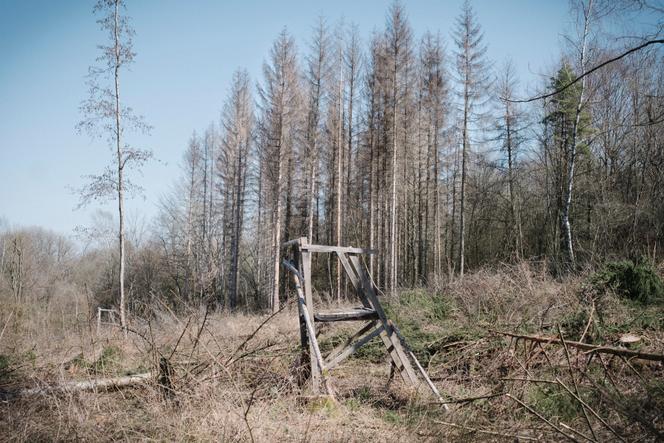


French forests, particularly valuable for climate and biodiversity, are suffering from multiple crises and increasing mortality, according to the national forest inventory published on Thursday, October 12. Each year, the French Institut National de l’Information Géographique et Forestière (IGN) draws up a precise inventory of the evolution of forest ecosystems and wood resources, based on data collected on 70,000 plots over the previous five years. "The latest campaigns show the concrete effects of climate change on forests and their growth," says the 2023 edition of the inventory.
The first alarming number is that almost 670,000 hectares (4.1% of the forest) are now dying. This is equivalent to the total area lost to fires over the last 35 years. "Although forest dieback is less spectacular than winter storms or summer fires, it is no less worrying for the future," stressed the IGN.
A timber stand is considered to be dying when 20% of the trees with access to light have died in fewer than five years, or when they have more than 50% dead branches in the upper part of their foliage. The number of 670,000 hectares is certainly an underestimate, as some dieback is difficult to detect, for example when diseased trees are removed very quickly.
In addition, tree mortality has increased by almost 80% in 10 years – the last inventory reported an increase of 54%. On average, dead trees accounted for 7.4 million cubic meters (Mm3) per year between 2005 and 2013, compared with 13.1 Mm3 between 2013 and 2021. However, these volumes represent only 0.5% of the volume of living wood. At the same time, tree growth has slowed "significantly," declining by 4% in 10 years.
These numbers can be explained by the impact of several diseases caused by fungi, insects or bacteria, the proliferation of which may be made easier by global warming. Three tree species are particularly affected: spruce, attacked by bark beetles, chestnut, susceptible to ink disease, and ash, the victim of dieback.
Trees are also suffering from recurring droughts and heatwaves. "It's like a boxing match," summed up Stéphanie Wurpillot, head of the forestry and environmental statistics department at IGN. "Every year, the trees take a punch in the face. There comes a point when they reach the knockout stage." As the inventory is based on data from the last five years, the numbers published on Thursday only partially reflect the effects of the exceptional droughts and fires that occurred in 2022.
You have 35.24% of this article left to read. The rest is for subscribers only.
